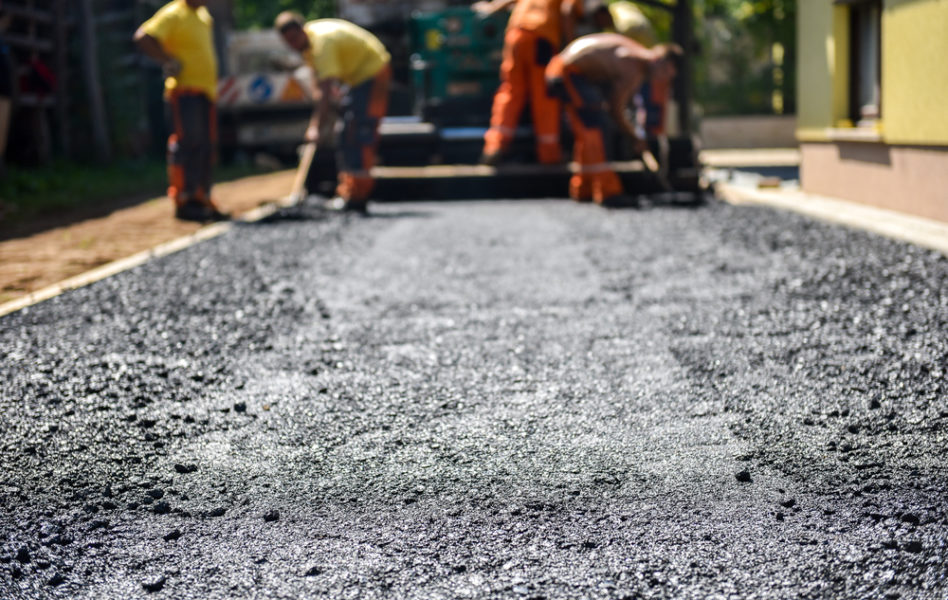Unlocking the Tricks of Warm Mix Asphalt Innovation
Discovering the depths of hot mix asphalt innovation uncovers a world where specific formulations and thorough procedures assemble to form our roads and facilities. The blend of aggregates, fillers, and binders isn't merely a construction task yet a critical orchestration of toughness and performance.
Relevance of Hot Mix Asphalt
Warm Mix Asphalt plays a vital function in modern-day framework growth due to its sturdiness and cost-effectiveness. As the most frequently utilized leading material for roads, freeways, and car park whole lots, Warm Mix Asphalt uses a variety of benefits that add to its importance in construction tasks.
The sturdiness of Hot Mix Asphalt stems from its structure, which consists of accumulations, binder, and filler products that are carefully selected and mixed to satisfy particular performance demands. This exact mix leads to a strong and versatile sidewalk that can withstand constant usage without substantial deterioration. In Addition, Hot Mix Asphalt is 100% recyclable, additional enhancing its sustainability and ecological benefits. Generally, the value of Hot Mix Asphalt in infrastructure growth can not be downplayed, as it remains to be a keystone of contemporary building practices.
Parts of Asphalt Mixes
The make-up of asphalt blends consists of very carefully selected accumulations, binder, and filler materials that are important for achieving specific efficiency requirements. Accumulations are the primary part of asphalt blends, providing stamina and stability. These accumulations can be natural, such as gravel or smashed stone, or synthetic, like recycled products from old pavements. The binder, typically bitumen or asphalt concrete, holds the accumulations with each other and offers flexibility and sturdiness to the mix. The choice of the binder is essential as it straight affects the mix's efficiency in various weather. Fillers, such as moisturized lime or Rose city concrete, are made use of to improve the mix's workability and aging resistance. Angled Parking.
The combination and proportion of these elements play a considerable function in establishing the high quality and performance of the asphalt mix. Engineers thoroughly design the mix to fulfill specific demands, taking into consideration aspects like website traffic volume, climate problems, and sidewalk life-span. Correct option and balancing of accumulations, binder, and fillers are crucial for developing sturdy, lasting asphalt sidewalks.
Mixing and Production Techniques

Once the aggregates are picked, the binder, often asphalt cement, is included in bind the materials together. The binder's top quality and quantity considerably affect the mix's resistance, versatility, and toughness to ecological aspects. In addition, fillers like moisturized lime or Portland cement may be integrated to boost particular attributes of the asphalt mix, such as its workability or moisture resistance.
During manufacturing, the aggregates and binder are heated up, typically in between 250-325 ° F(121-163 ° C ), to assist in blending and ensure proper finish of the aggregates. The blending process should be detailed to achieve an uniform mixture that promotes the wanted efficiency features of the asphalt. Various techniques, such as batch mixing or drum mixing, are used to accomplish consistent and top quality asphalt mixes for construction projects.
Aspects Impacting Asphalt Efficiency
Aspects affecting asphalt efficiency incorporate an array of variables that affect the durability, longevity, and overall quality of asphalt pavements. One essential factor is the high quality of review materials utilized in the asphalt mix.

Ecological problems likewise influence asphalt efficiency. Temperature variants, wetness infiltration, and website traffic loads can all impact the architectural stability of the pavement. Layout factors to consider, such as sidewalk density and drainage, are crucial in making certain the long-lasting efficiency of the asphalt pavement. By thoroughly considering these professionals, engineers and aspects can optimize asphalt performance and improve the life span of sidewalks.
Sustainable Practices in Asphalt Modern Technology

In addition, the development of warm-mix asphalt (WMA) modern technologies has check here actually gained grip over the last few years. WMA permits the manufacturing and placement of asphalt mixes at lower temperature levels contrasted to traditional hot-mix asphalt, causing reduced energy consumption and greenhouse gas exhausts. In addition, using permeable asphalt mixes can aid minimize stormwater runoff problems by enabling water to infiltrate with the sidewalk and right into the ground, promoting natural water filtering and reenergize processes. By executing these sustainable practices, the asphalt industry can add to building a much more resilient and ecologically pleasant facilities network.
Conclusion
Finally, hot mix asphalt innovation plays an essential function in modern infrastructure advancement due to its longevity and cost-effectiveness. home By very carefully stabilizing elements, utilizing correct blending strategies, and considering various factors, designers can develop top quality asphalt mixes that hold up against heavy web traffic tons and harsh weather conditions. Accepting lasting techniques, such as making use of warm-mix modern technologies and recycled products, even more enhances the ecological kindness of asphalt technology.
Mixing and production methods in hot mix asphalt modern technology include the accurate combination and handling of aggregates, binder, and fillers to create a high-performance and long lasting asphalt mix.Elements influencing asphalt performance incorporate an array of variables that affect the sturdiness, durability, and overall high quality of asphalt pavements. Sustainable methods in asphalt modern technology encompass numerous campaigns intended at lowering the ecological impact of asphalt manufacturing and paving processes. By including reclaimed asphalt sidewalk (RAP) and recycled asphalt tiles (RAS) into brand-new asphalt blends, the sector can significantly lower the intake of raw materials and power, while additionally reducing landfill waste.
WMA allows for the production and placement of asphalt mixes at lower temperature levels compared to typical hot-mix asphalt, resulting in lowered power usage and greenhouse gas emissions.